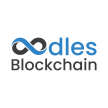Exploring Modular Blockchain | Moving Beyond Monolothic
The debate around modular blockchains has recently heated up. Let's explore the emergence of modular blockchain development.

The debate around modular blockchain development has recently heated up in the cryptocurrency community. Some of the causes for the emergence of modular blockchains include the lengthy transaction verification process in Bitcoin and the high gas fee in Ethereum. Let’s explore the emergence of modular blockchain development.
What is a Monolithic Blockchain
A type of blockchain architecture known as monolithic blockchain tries to handle everything from execution to consensus to data availability in the blockchain (layers will be explained more in the next section).
This indicates that all validators and full nodes perform consensus and chain execution.
For instance, the blockchains of both Bitcoin and Ethereum are Monolothic. The only exception is that the Ethereum virtual machine, a general-purpose smart contract ecosystem, has taken the place of Bitcoin’s execution layer in Ethereum.
The issue
The issue is that full nodes that verify the chain must:
Reach an agreement
Confirm the validity of the transaction
Monolithic blockchains do not scale effectively as a result, especially if the complete network’s state and history must be executed by full nodes.
Understanding a Modular Blockchain
A blockchain that completely offloads at least one of its parts to another chain.
Modularity: Using each unique functional unit, such as when putting together a system.
In the context of blockchains, this would entail dividing a blockchain’s essential functionality among various applications that can be switched out quickly.
Consider the normal layer 2 on Ethereum as an illustration. On Ethereum, data availability and consensus are handled by Layer 1. Before transmitting the data back to Layer 1, Layer 2 applications like Polygon use various rollup methods to execute Off-chain calculations.
What a Modular Blockchain is NOT
A blockchain that has a modular software architecture but manages all of the components
A system of blockchains, each of which manages all elements (e.g subnets for Avalanche. Each chain in the subnets, manages all the layers)
In essence, the modular structure of blockchain enables various technologies to fulfill functions for which they are most suited in the underlying blockchain.
Finally, let’s briefly describe the various “layers” of functionality that make up a blockchain.
Execution
Here transactions and state changes are first processed. Through this layer, users often communicate with the blockchain by executing smart contracts, signing transactions, and transferring assets.
Settlement
The verification of rollup execution and dispute resolution occurs at the settlement layer. This layer is an optional component of the modular stack that does not exist in monolithic chains. Consider the Settlement layer as the U.S. Supreme Court, which offers final adjudication on disputes, in an analogy to the American legal system.
Consensus
The consensus layer of blockchains offers ordering and finality through a network of full nodes downloading and executing the contents of blocks and coming to an agreement on the legitimacy of state changes.
Data Availability Layer
It is a verifiable way to publish the ordered messages to the network. It ensures that the transaction data behind the block header is published and available so that anyone can easily calculate the state and check the state transitions.
Modular blockchains’ benefits
In the long run, modular blockchains are a preferable choice for dApps development since they have several significant advantages over monolithic blockchains:
Flexibility
There is more flexibility in terms of the kinds of apps that can be built on top of the blockchain because various blockchain components can be swapped out and altered. This is especially helpful in fields that require a high level of customization, such as supply chain management or the financial industry.
Scalability
In contrast to conventional, monolithic blockchains, it enables a more scalable solution. It is because different components may be added or withdrawn as needed. This will become increasingly significant as more companies and organizations start to use blockchain technology. Being able to scale the technology efficiently will be essential in addressing the rising demand.
Security
Traditional, monolithic blockchains tend to be less secure than modular blockchains. The ability to independently audit and test any component of the blockchain can aid in ensuring the system’s overall security. This is crucial since many businesses that are thinking about implementing blockchain technology have serious security concerns.
Innovation
The ability of modular blockchains to augment the development of innovative and cutting-edge dApps is another advantage. Developers can construct new modules to create distinctive and practical applications by developing each module individually. As more people can use blockchain technology to address real-world issues, this may help to accelerate its growth and adoption.
Conclusion
The design of blockchains is changing from a single-component architecture in which consensus, data availability, and execution are intertwined to a modular architecture in which execution is isolated from data availability and consensus.
This division makes it possible for base layer specialization, which greatly increases bandwidth capacity.
For more information about modular blockchain development, you may Hire Blockchain Developer
About the Creator
Oodles Blockchain
Full-Stack Blockchain Development Services and Solutions for Startups and Enterprises for Business Excellence






Comments
There are no comments for this story
Be the first to respond and start the conversation.